Investigation
Homesteading Is a Viral Trend, but ‘Butchery Gone Awry’ Is Its Dark Side
Food•6 min read
Explainer
Because of factory farming, people can eat low-cost fish, chicken, beef, pork, and other animal-based foods, but at the expense of the environment, animal welfare, and marginalized peoples.
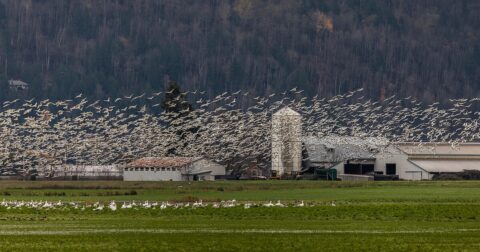

Words by Hemi Kim
Major food companies dominate the supply chain from the birth of a farmed animal until it reaches the shelves, freezers, and refrigerators of supermarkets, cafeterias, and restaurants. These companies can control the rate and methods of production across large swaths of the markets in chicken, beef, pork, and other animal products. Their packaging at the store is labeled with euphemisms that belie a traumatizing reality evident to anyone who learns about how meat is made. If you want to learn more about the conditions of meat production yourself, then this article is for you.
Factory farming refers to the conditions in which animals are raised year-round, in huge numbers, for the meat industry. On intensive animal farms, people raise pigs, chickens, cows, and other young animals in buildings or pens known as concentrated animal feeding operations (CAFOs). The animals are bred to grow quickly and are fed monocropped foods. They are then slaughtered and “processed” into kitchen-ready foods on a mechanized assembly line, that dictates the pace of workers’ labor.
The term factory farming typically denotes a critique of food companies that have historically prioritized maintaining their power and profits while contributing to harm in their communities: to individual farmers and ranchers, farmworkers, local economies, and public health.
Because the meat industry is so vertically integrated—meaning that the same company owns much of the process from the birth of an animal until it reaches your dinner plate—factory farming can also be short-hand for meat production and animal agriculture specifically. In fact, slaughterhouse workers are often referred to as factory farm workers in online media.
People usually think of land animals when the term is used, but fish are also raised using factory farming methods.
The roots of factory farming lie in the period of industrialization and urbanization in the United States from the mid-19th century to the mid-20th. Many individuals and groups began to compete for the profits that were available in creating and selling affordable food in reliably large volumes, across a national distribution network.
Before this, however, white settler-colonists, supported by prevalent white supremacist thinking, had long pursued the genocide of Indigenous peoples and the dispossession of their lands across the Americas, including the present-day U.S. The beginnings of modern animal agriculture via the breeding of domesticated animals in the U.S. are tied up with the way colonists asserted this ownership of land alongside their rights to enslave people and farmed animals.
American cattle ranchers in the beef industry in the mid- to late-19th century were actively entangled with the U.S. military’s continuing project of colonization and theft of American Indian land, according to Joshua Specht’s book, “The Meat Republic”. As Specht explains, the beef industry was pioneering in industrial animal agriculture: cattle farms were standardized, railroads and refrigerated cars shipped cattle to big cities, and a handful of meatpacking companies in Chicago were the first to use the assembly line year-round to slaughter animals, then process meat into food for distribution throughout the nation.
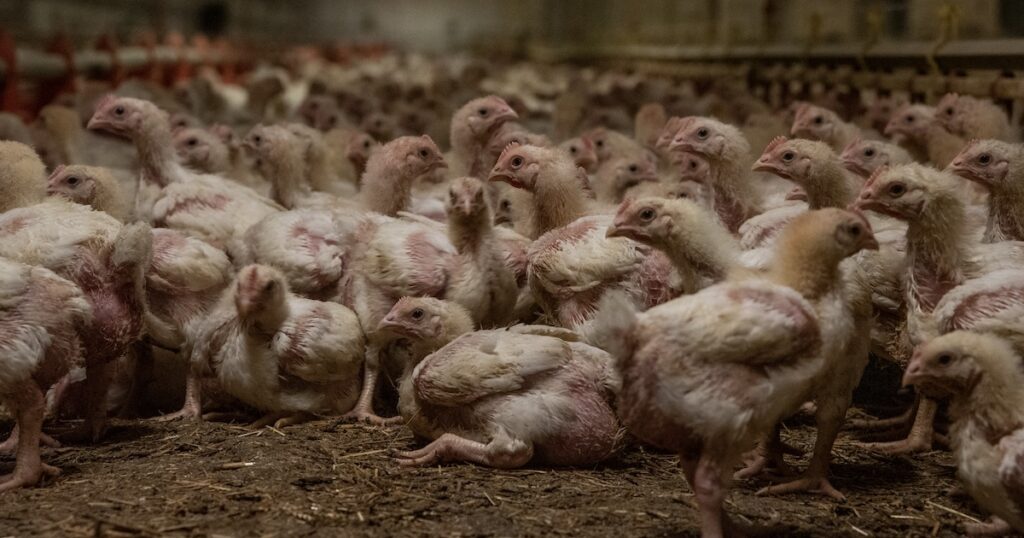
In the early to mid-20th century, the chicken industry began raising chickens on a new and larger scale. The chicken industry—and later, much of the pork industry, and to a lesser extent, the beef industry—established itself by contracting with farmers who would only raise the animals, integrating these farmers into the rest of their national supply chains and leading to industry consolidation in the hands of a few major companies.
Other growth factors for the chicken industry, as Monica Gisolfi details in the book “The Takeover,” included technological elements like electrification and growing access to cheap chicken feed, reinforced by active state support in the form of government subsidies such as the Agricultural Adjustment Act of 1933 and programs and research to support industry needs such as vitamin-fortified foods. The whole system also relied on the exploitation of sharecroppers and tenant farmers by landowners.
To food companies, animals are something to sell for profit, rather than living beings that can feel pain and joy. Below are some examples of common practices in the raising of animals for meat that have received widespread criticism.
By supporting the passage and enforcement of food libel and ag-gag laws, companies take advantage of their economic power and restrict the freedom of speech of consumers, farmers, and farm workers alike. Freedom of expression is considered a human right.
A beak functions like a hand does to humans and contains nerves. When a chicken’s beak is partially amputated, researchers observe behaviors indicating pain and depression for the animal. The unnatural and stressful conditions of living in a warehouse where one can hardly move lead chickens to peck at themselves and each other. In countries where it is legal to do so, food companies will typically remove part of the beak of egg-laying chickens to prevent this type of injurious behavior.
Cows use their tails to help keep flies at bay. It is common and legal in most of the U.S. to amputate the tails of cows without anesthesia. Animal welfare advocates, including veterinarians, strongly oppose tail docking in cows and explain that it has not been shown to provide the proposed benefits. Docking cows’ tails is said to cause pain and discomfort, even when they do receive anesthesia and painkillers.
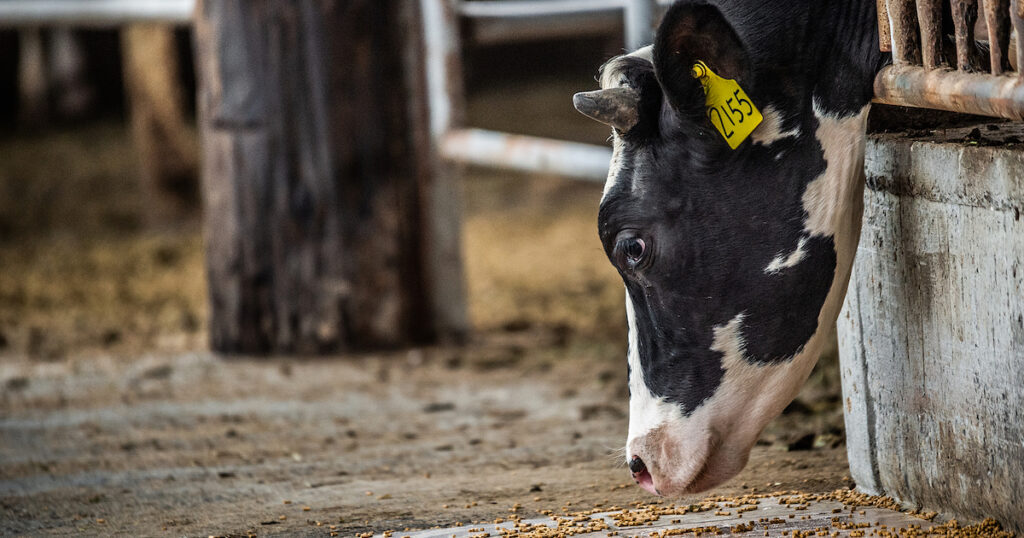
Animals are separated from their mothers and raised in tight quarters, with very little or no room to move, unable to escape their own feces and waste.
Food companies develop breeds of faster-growing animals with traits that mean more meat from each carcass, maximizing profits: chickens with unusually large breasts, stockier pigs with leaner meat. The result has been chickens who are unable to walk, and pigs that are nervous and highly excitable, with weak hearts.
Forced molting is still common practice in the factory farming industry. Molting is a natural behavior for chickens that occurs when the chickens shed their old feathers and growing new ones. They also stop producing eggs. Forced molting happens when producers starve the chickens for one to two weeks to ensure that all of the hens stop producing eggs at the same time. After the forced molting, hens lay eggs faster.
The smell of ammonia, also known as NH3, is a common feature of factory farms. Ammonia is a gas that accumulates with the feces and urine that are allowed to collect beneath animals living in confined spaces. It is also used as a fertilizer, spread by farmworkers.
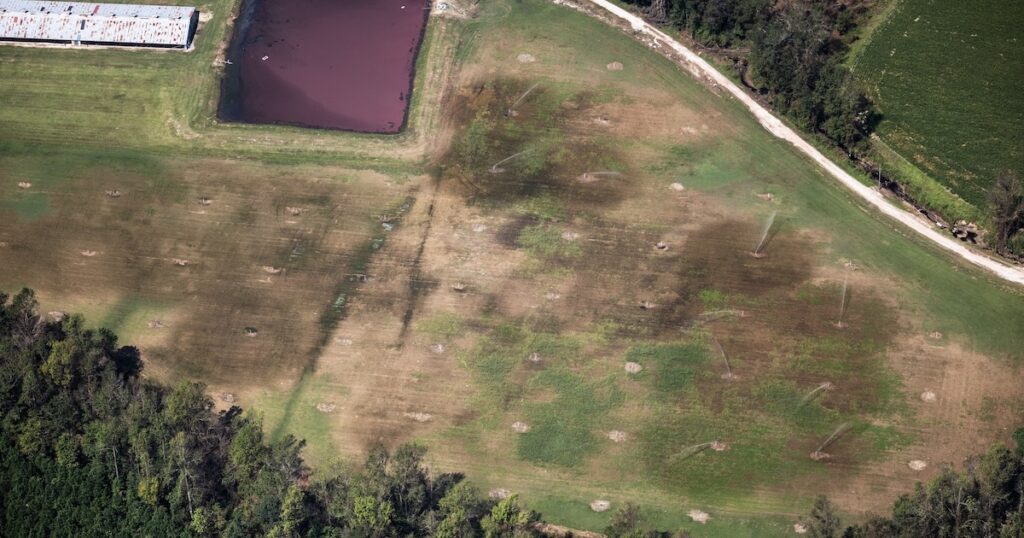
Ammonia can irritate the eyes of chickens, cause nasal and lung distress in pigs, cows, and sheep, and can be toxic when ingested by animals in fertilizer or contaminated feed and water. But its effects aren’t limited to animals. Ammonia exposure from factory farming often damages the lungs, eyes, and skin of farmworkers and nearby residents, and leads to respiratory problems like asthma. Of the 17,900 human deaths per year from air pollution in the U.S., ammonia from factory farming is likely responsible for 12,400 of them, making it one of the deadliest air pollutants in America, per the Washington Post.
Critics of factory farming tend to focus on the quality of life of farmed animals, the health of the earth, and the well-being of ordinary people—values that make it hard to accept factory farming methods. Below are some ways in which meat production companies violate these values.
Young animals are taken from their parents, raised in tightly packed spaces, and are denied access to fresh air and the outdoors. For food companies who pay farmers for animals by weight, an animal’s health is less important than whether they are simply alive, at which point they can be used for meat and sold at a profit. As a result, the animals live in unsanitary conditions, pain, loneliness, and poor health. One consequence of poultry breeding is that birds grew too fast for their legs and bodies to support them.
Raising animals for meat directly pollutes the air and water, and degrades land. The environmental impact of companies invested in animal agriculture is most directly experienced by the economically exploited and racially minoritized communities that live near factory farms. Below are some examples of how food companies harm the environment.
Climate change advocates are increasingly aware that meat production is responsible for about one-fifth to 37 percent of greenhouse gas emissions.
Livestock waste and the use of pesticides and fertilizers to produce animal feed contaminate waterways and groundwater. Run-off from factory farming contributes to dead zones in the ocean.
Animal agriculture takes up about 80 percent of all agricultural land in the world and causes various forms of land degradation including the deforestation of the Amazon and poor soil health in areas of heavy pesticide and synthetic fertilizer use.
Whether or not you eat meat, the companies that contract its production at farms are doing so in ways that harm human health—including that of nearby residents, farmworkers, and their families.
“About 80 percent of the antibiotics sold in the United States and half of those sold around the world are used in animals, not humans,” writes Maryn McKenna in “Big Chicken.” Factory farming methods make poor health and disease a constant occurrence among farmed animals: confinement, mutilation without anesthesia, separation from mothers, and harmful breeding practices. Over-reliance on antibiotics in the factory farming industry to meet minimal animal welfare standards has led to antimicrobial resistance (AMR)—the development of superbugs that are resistant to antibiotic drugs.
Residues of this bacteria can also be found in meat at the store, and when animal waste is used as fertilizer, the waste also contains antibiotic drugs and pollutes the local water, soil, and food crops. AMR causes the deaths of 700,000 people per year worldwide and is a massive threat to public health.
As of 2017 antibiotics can no longer be given to animals for non-medical purposes in the U.S., but the practice is still allowed in some other countries, and animals deemed ill can still be administered antibiotics.
Workplace bullying and discrimination based on ethnicity and citizenship status are common, along with a sense that employers care “more about the cows than about workers’ well-being.” These are findings of a 2017 report on immigrant dairy farm workers by worker advocates in New York State. Farmworkers, including dairy and other livestock workers, are excluded from U.S. labor law protections—in another example of the continuing operation of white supremacy. Basic labor rights that farmworker advocates often seek include the right to organize and overtime pay.
As a result, the 2017 report authors explain that dairy farm workers often worked with no rest days, for 12 hours at a time, with very short, five-minute breaks. Most workers felt depressed and confined in substandard, employer-provided housing on the farm.
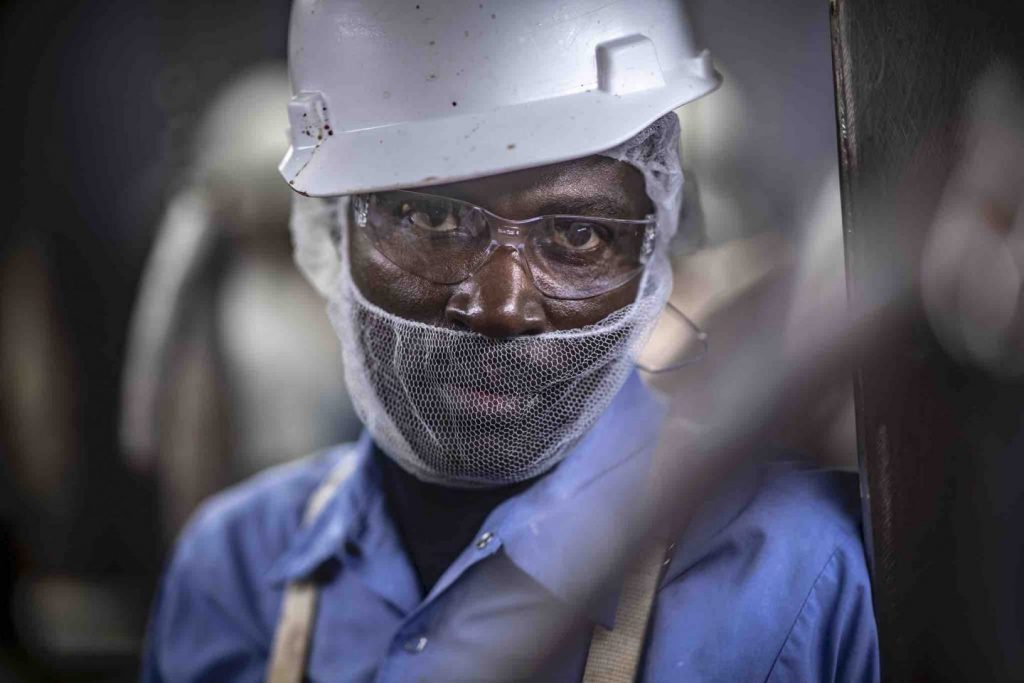
The same unsafe living conditions of chickens, cows, pigs, and other animals in farms also threaten the health of workers who are charged with handling the animals. Breathing in the dust and gases from factory farming leads to respiratory problems, something most workers at pig farms experience, per the Food Empowerment Project. Animal farm workers who are chronically exposed to hydrogen sulfide, a gas that arises from liquid manure, can experience skin and eye irritation. The amount of liquid manure itself can be a hazard. Workers have died from asphyxiation as a result of the release of hydrogen sulfide.
Workplace hazards in animal agriculture also include needle pricks, animal-to-human infections, extremely cold or hot weather, and physical injuries.
Farmer-owners in the meat industry—particularly chicken and pig farmers—are often unable to escape debts from disadvantageous contracts with food companies. They regularly only have one buyer with which to negotiate prices. As a result, most farmers lose money on their operations or make unstable, poverty-level incomes, requiring them to find additional work elsewhere to supplement their farm income.
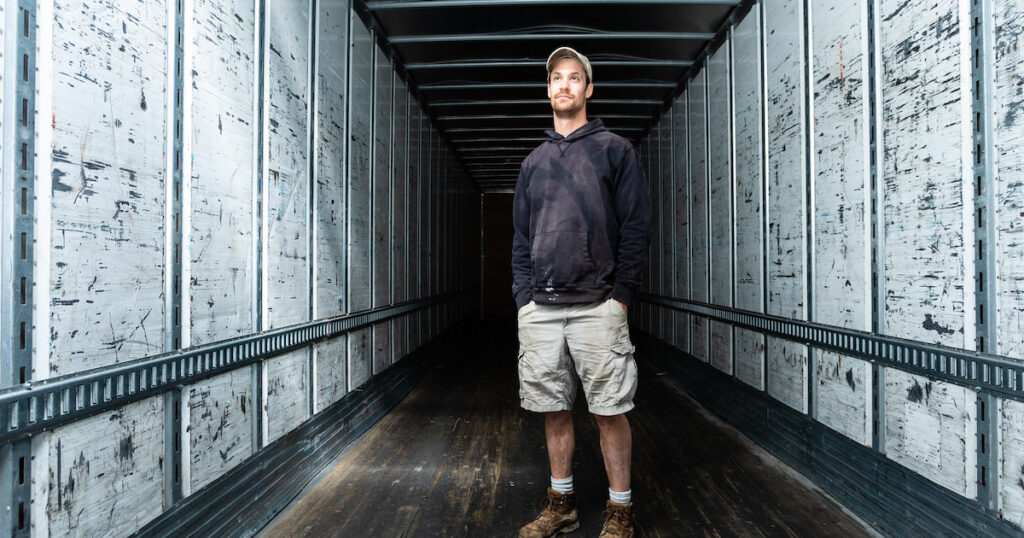
Diseased or otherwise unwanted animals are regularly killed on farms. Some methods of killing chickens and other livestock are grinding, gassing, and snapping their necks.
In the “ideal” factory farming scenario, animals are raised on farms and taken, while still alive, to another site to be slaughtered and “processed.” However, animals do die while living in captivity, whether because of inadequate treatment for disease, poor-quality feed, or ailments related to their selective breeding for factory farming.
While there is no official count of concentrated animal feeding operations in the U.S., the 2017 Census Ag Atlas Maps indicate that beef cow farms were concentrated in a corridor running from Texas to North Dakota. Milk cows were mostly in California, Idaho, Wisconsin, Pennsylvania, and New York. Pigs were concentrated in Iowa and North Carolina. Chickens were mostly in the Southeastern and Mid-Atlantic states.
China and the U.S. are the countries producing the most meat in the world, according to Our World in Data.
Technically, factory farming is legal. However, the laws governing animal agriculture and related food companies are not well-enforced. For example, the Packards and Stockyards Act of 1921 was enacted to protect farmers from food companies dictating how farmed animals are to be raised. Yet it has been watered down, advocates say. Meat industrialists have used legal means to weaken animal welfare standards and to establish their political and economic dominance over consumers, communities, animals, workers, and farmers.
Meat-eating is both a longstanding phenomenon and one that has been transformed and given a new scale in an industrialized world. One reason animal agriculture continues is because eating meat is a deeply embedded cultural norm for many people, and hard to change. In their book “Aphro-ism,” theorists Aph and Syl Ko also describe how the modern ways of separating human and animal developed alongside ideas of racial hierarchy, and posit that the norm of seeing nonhuman animals as lesser beings is deeply entwined with a white supremacist worldview.
The most basic alternative to animal agriculture is agriculture without animals. Rather than eating meat, consumers can look for plant-based options. Human deaths around the world could be prevented by 6 to 10 percent, researchers say, if people reduced their meat intake. Even switching to a partially meat-free diet could significantly reduce greenhouse gas emissions.
With regard to farmworkers, advocates in the dairy industry point out that states can provide basic labor protections, extend driver’s licenses to undocumented immigrants, and “be more informed about agricultural production. This is hard work and it is mostly Latinos doing it.” Most dairy farmworkers are undocumented Latino immigrants.
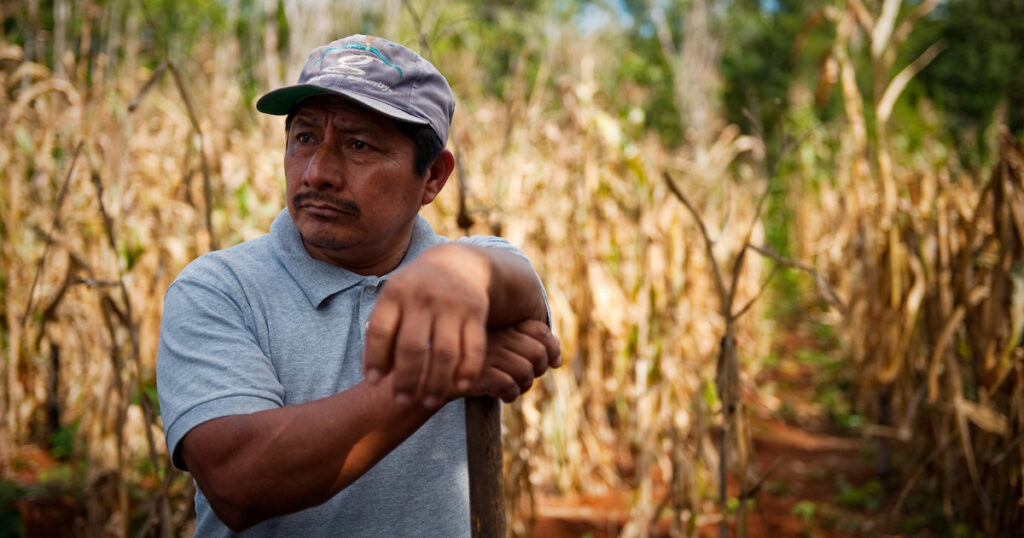
Finally, finding an alternative to factory farming, and the factors that maintain it within the food industry, may require more than eliminating meat and addressing workers’ rights. It means shifting the balance of power towards equity in food systems on every level and in each sector of the supply chain. For starters, Soul Fire Farm’s policy platform suggests concrete ways for how individuals and organizations can fight for a more just food system: for farmers and farmworkers, for Black, Latinx, and Indigenous people, and for schools and communities.
Through factory farming methods, people can eat low-cost fish, chicken, beef, pork, and other animal-based foods, but at the expense of the environment, animal welfare, and marginalized peoples. It is possible to change the way we get our food. By reducing the consumption of meat, and valuing workers, people of color, communities who live near farms, and the general public, humans can better care for the earth and its inhabitants.